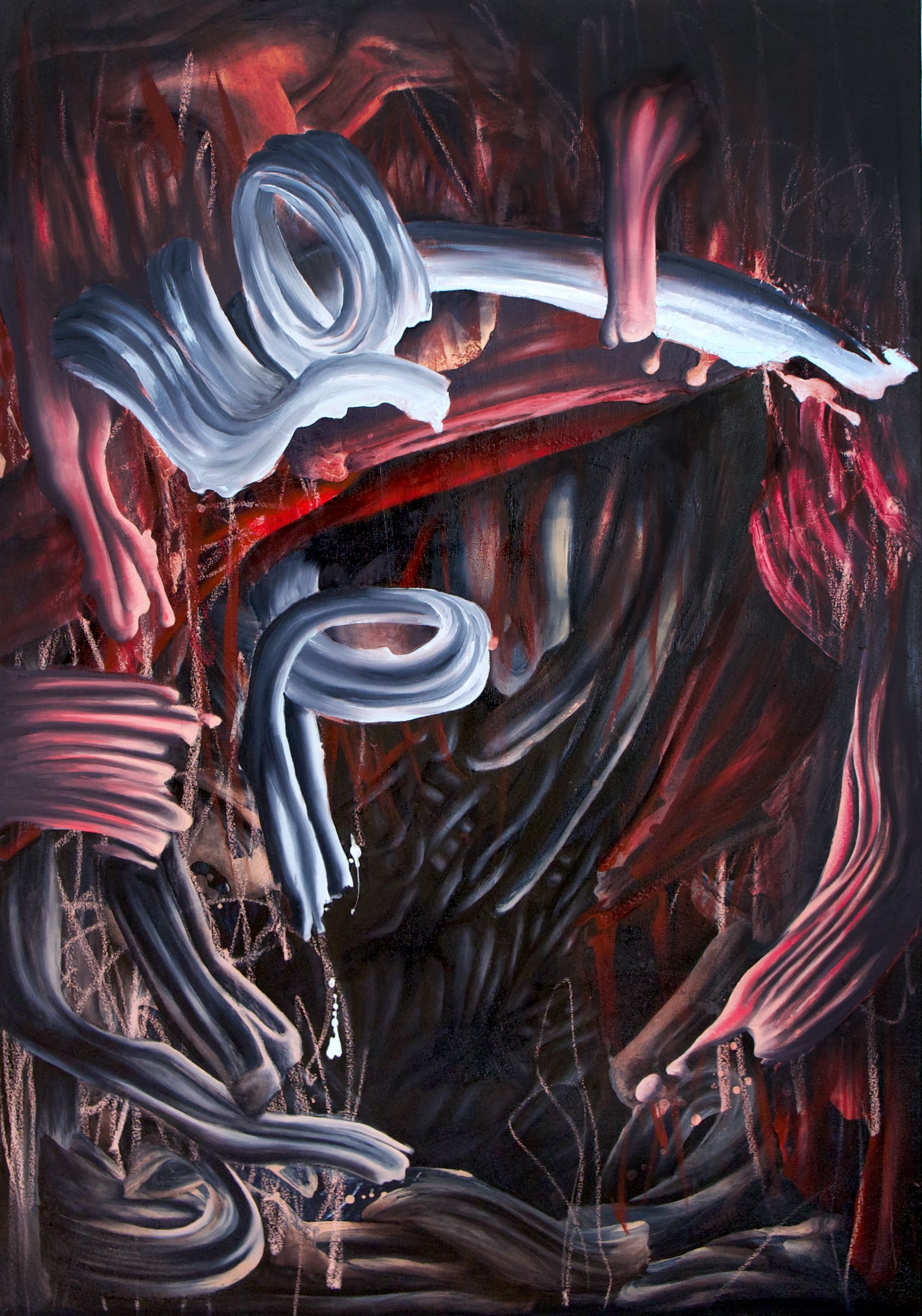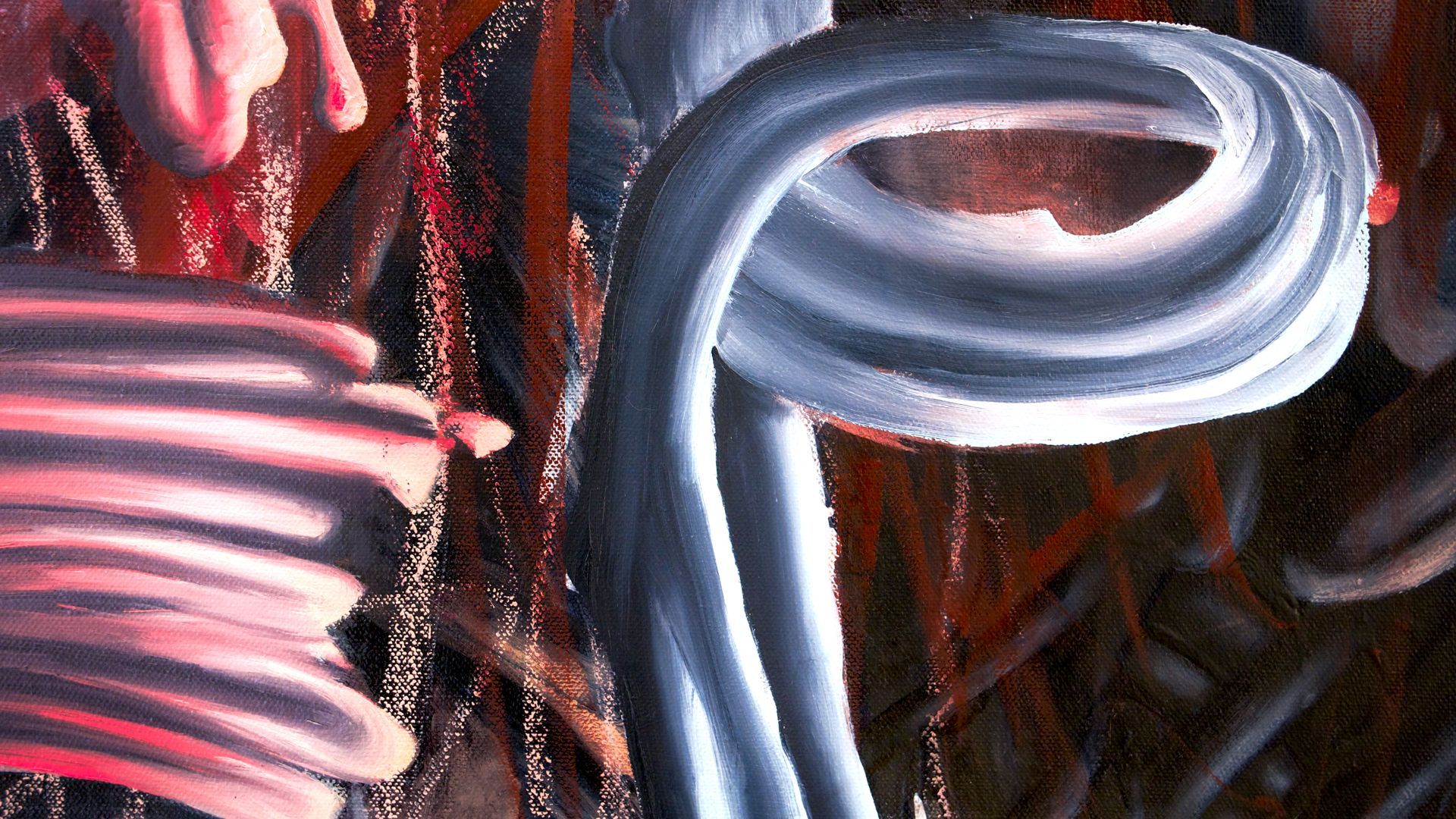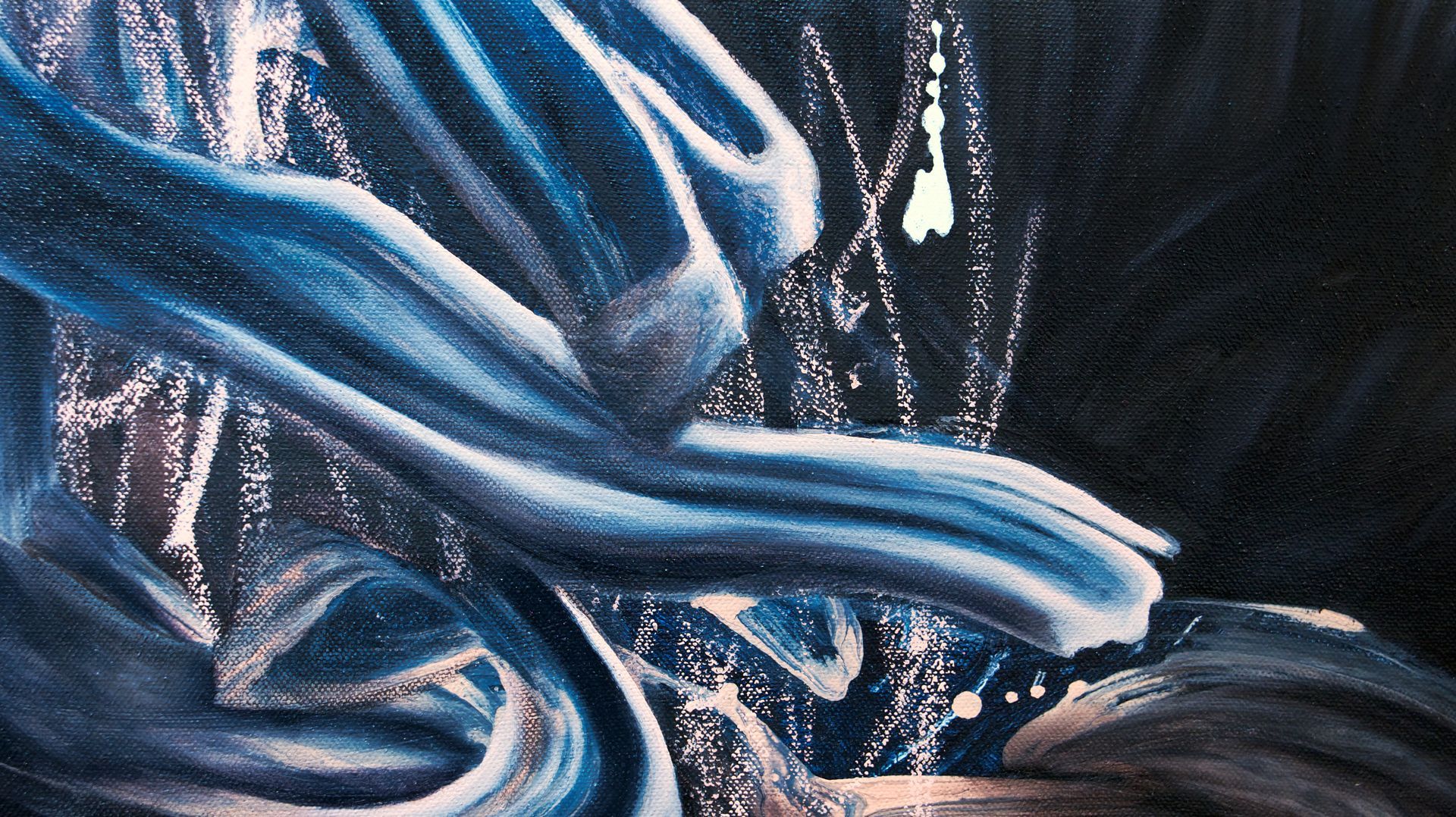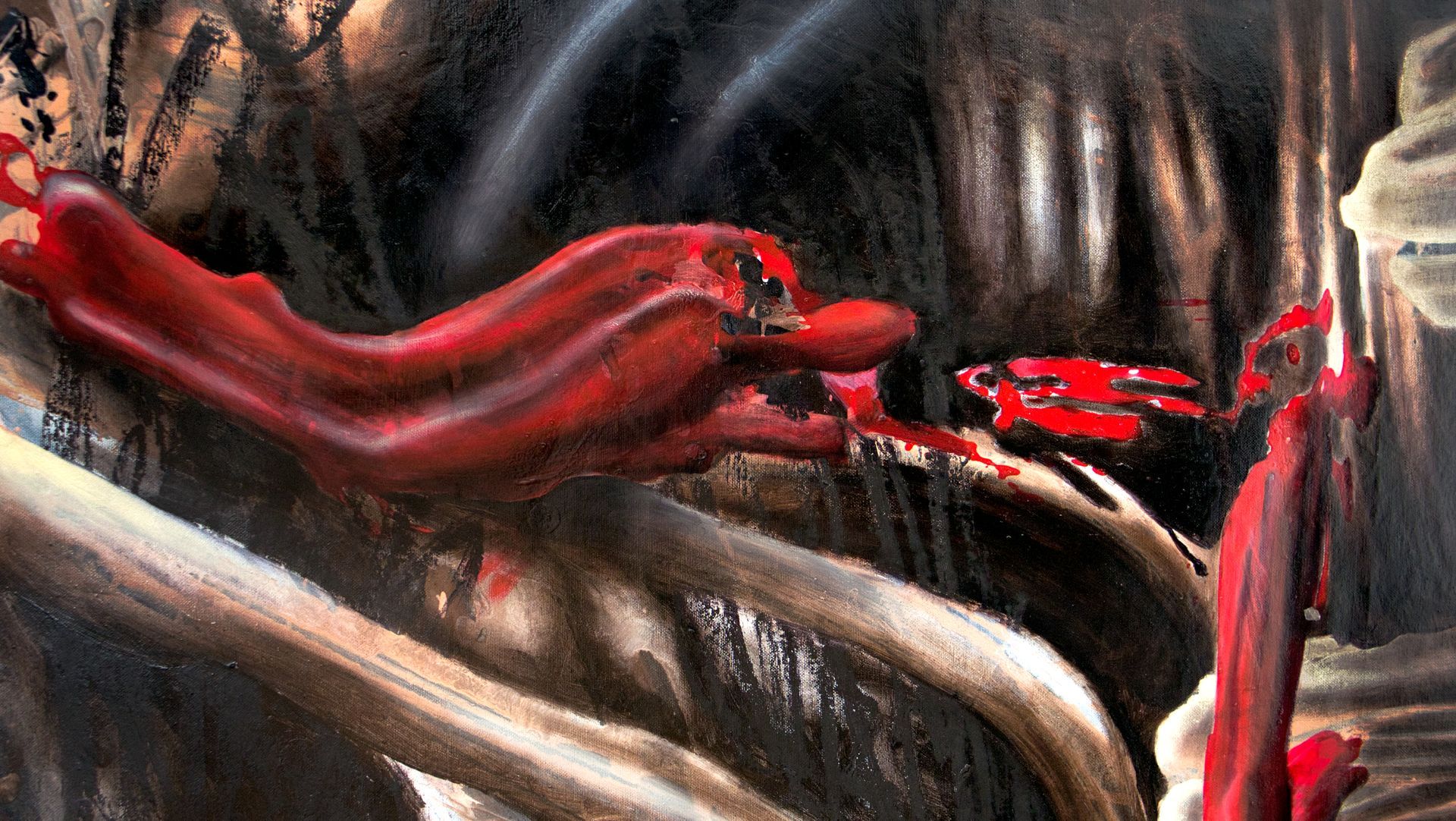Lala Drona is a Franco-American fine artist of Venezuelan heritage working between Paris and London. Her practice spans painting and video, probing the body not by appearance but by sensation: an interior landscape of memory, intervention, and transformation. She recently completed her Masters in Painting at the Royal College of Art.
Little Miss Perfect: The Void Inside Perfection
A feminist-psychoanalytic reading of Little Miss Perfect, where appearance and abjection converge in painted flesh.

When Perfection Becomes a Void
Little Miss Perfect (oil on canvas, 100x70cm) stages a collision between surface and interior. The title sounds playful, almost like a schoolyard nickname. But the painting reveals something darker: a bodily portal, a hollow vessel of flesh. If she were a character, she would be the empty container left by impossible expectations.
The looping brushstrokes mimic decorative ribbons yet sag with fleshy weight. What begins as ornament twists into viscera.
The clash between title and image invites laughter, but the humor is uneasy. Perfection, here, is not achievement. It is an absence.

Structural Violence and Feminist Critique
Perfectionism is not just personal neurosis; it is a disciplinary regime. Judith Butler describes how bodies are shaped and constrained by social norms, often to the point of erasure.¹ Little Miss Perfect makes that erasure visible: the polished surface collapses into abject matter.
Julia Kristeva’s notion of the abject is key here: what society rejects and casts out is what threatens to return.² The “perfect” body hides its wounds, but here those wounds spill onto the surface. The painting exposes the psychic cost of ideals that hollow us out from within.
Yet satire keeps the wound from being pure tragedy. The contradiction is deliberate: "Little Miss Perfect" is a cruel joke that provokes laughter before pulling the viewer toward empathy.

Decorative Flesh and Painterly Lineage
The painting also participates in a lineage of women painters who turned gesture into critique. Cecily Brown’s orgiastic swirls, Joan Semmel’s confrontations with the female body, Jana Euler’s warped archetypes, Lee Krasner’s fierce abstractions... all dissolve the boundary between surface and flesh.³
In Little Miss Perfect, the decorative becomes visceral. The swirling strokes resist containment even as they mimic polish. They are both allure and rupture, echoing Deleuze and Guattari’s concept of the body without organs: a body refusing fixed structure, opening itself to intensity.⁴

Closing
Little Miss Perfect belongs to my current series of totemic satirical feminine archetypes. Each work personifies an invented figure: Madame Sidewalk staged the collision of body and city, while Little Miss Perfect exposes the psychic void behind perfection. Others in the series map the body against broader societal constructs.
You can see more from this series in my paintings page. For a companion reading, see my blog essay on Madame Sidewalk, where I expand this exploration of flesh, space, and power.
Bibliography
- Butler, Judith. Bodies That Matter: On the Discursive Limits of Sex. Routledge, 1993.
- Kristeva, Julia. Powers of Horror: An Essay on Abjection. Columbia University Press, 1982.
- Nochlin, Linda. Women, Art, and Power and Other Essays. Routledge, 1988. (contextualizes feminist painters and abstraction; situates Krasner and Semmel historically, while providing a foundation for later readings of Brown and Euler).
- Deleuze, Gilles, and Félix Guattari. A Thousand Plateaus: Capitalism and Schizophrenia. University of Minnesota Press, 1987.





